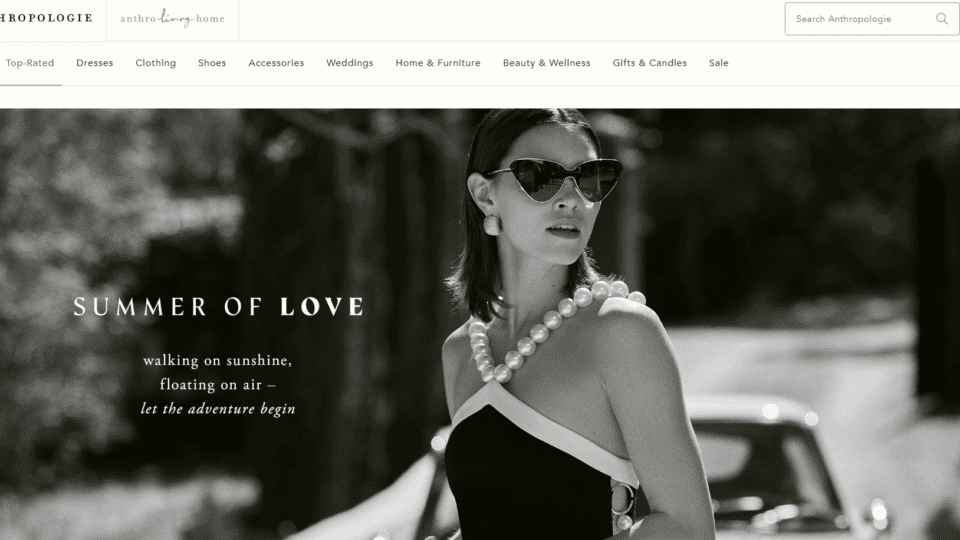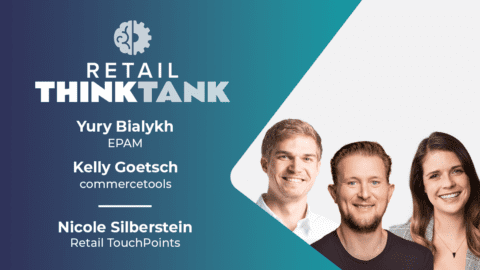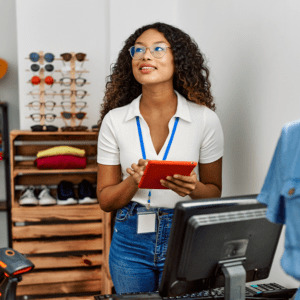While Urban Outfitters’ assortment is designed for consumers in their teens and early 20s, Anthropologie provides a destination for consumers’ “next generation of life,” when they’re starting careers and families, according to Chief Marketing Officer Elizabeth Preis. And despite having an incredibly loyal customer base, Anthropologie has focused on expanding its reach, especially among consumers in their late 20s through early 40s — and a few more as well.
“We’re trying to keep that customer over 40, but we’re trying to go back to our younger customer as well,” Preis said during her session at CommerceNext’s Ecommerce Growth Show, held June 20-21 in New York City. “We’re very fortunate because we have an amazing, loyal following of customers — I’m constantly amazed by how much love there is for this brand,” Preis added. “But you can’t get lazy. It’s so easy to rely on the customers who love you anyway, but if you’re not constantly infusing new customers into your mix, you’re not doing your job.”
To build market share and introduce Anthropologie to a new group of customers, Preis and the leadership team have aligned on a vision that includes testing new storytelling mediums and marketing platforms while also investing more heavily in the brand’s key differentiators. Preis shared how the brand has remained true to its core heritage while adapting new methods that reach and engage younger consumers.
A ‘Portfolio Approach’ to Marketing Optimizes Acquisition and Engagement
To effectively reach younger consumers, Anthropologie has had to diversify its marketing mix and invest more heavily in creating content. The brand uses a combination of Facebook, Instagram, YouTube, TikTok and even other channels, and adjusts its approach based on its goals and changing consumer behaviors.
“In marketing, it’s not about one channel or another; you need the portfolio because things can change,” Preis explained. “Facebook was huge years ago, but it’s not the same platform it was when it launched. You have to understand the objective of each platform and who their consumer is.” For example, Preis noted that TikTok is especially powerful for product discovery and to see what’s trending in specific categories, while Instagram is key for building partnerships with digital content creators who provide a “gateway to their following” so Anthropologie can create more authenticity around the brand.
Digital channels support Anthropologie’s acquisition efforts, but catalogs still support the brand’s retention and loyalty play. “Media and print tell a different story,” Preis said. “We think of it as a way to deepen the relationship with our customers and get them into new categories.”
Advertisement
Physical Stores Create Unique Value and Get ‘Premium’ Investment
Like many omnichannel retailers, Anthropologie understands the unique value of its stores. Preis explained that its locations convey a unique magic and sense of discovery that consumers simply cannot find online, and that stores “allow you to tell your brand story in a different way.”
“There’s something magical about being in a place — and memories are made more frequently in places rather than sitting behind a computer,” Preis said. That is why leadership places a “huge premium” on the store experience, from associate hiring and training to visual merchandising and store design.
“As a company, we place a huge premium on creativity. We say we’re data-informed, creativity-led and consumer-inspired,” said Preis. This mantra has allowed Anthropologie to double down on tactics that make its store experience unique, such as its approach to store merchandising, which is more reminiscent of a small boutique than a chain retailer.
“We are not a department store, so we’re not forced into merchandising certain product categories together,” Preis explained. “We’re a specialty store with a range of products, so we think about how the consumer experiences the brand. We can bring dresses and books together to create punchiness and excitement, and even add some candles next to them.”
Rentals and Resale Help Expand Reach
Anthropologie parent company URBN also owns Nuuly, a clothing rental and resale company. Anthropologie can tap into this brand to offer “previously loved” items to consumers, either through the Nuuly site or its own branded ecommerce experience. Venturing into resale and rental is just one component of Anthropologie’s broader goal of “speaking to consumers in life stages,” according to Preis. That means offering solutions and services that allow younger consumers to make their first “entry point” to the brand. In addition to rental and resale, the brand also offers various buy now, pay later services, including Klarna and Afterpay.
Together, these methods allow Anthropologie to respond to new competition from SHEIN and other fast-fashion players without sacrificing its brand intention to provide an aspirational curated assortment.
“A lot of our customers actually say they prefer to pay more for a higher-quality product that’s better made, because they’ll have the product for a longer period of time and therefore it won’t land in a landfill sooner,” Preis said. Although SHEIN is undeniably the big dark cloud hanging over the fashion industry, these insights show that before executives implement a response plan, they need to “know who you are as a brand and make sure that comes through in everything you do.”
Generative AI Inspires Creativity at Scale
Although Preis acknowledged that Anthropologie is very much at the beginning of its generative AI journey, she shared the brand has seen both efficiency and creative value in the technology. On the efficiency side, generative AI has helped the ecommerce team optimize keywords and search terms, which allow consumers to search and discover products more seamlessly.
However, generative AI also allows the team to develop content and creative at a faster pace, which ultimately allows the brand to test, iterate and innovate more seamlessly. The influence of generative AI has even inspired Anthropologie to partner with Google on its new AI shopping feature. Google’s new generative AI model can now take a clothing image and accurately reflect how it would drape, fold, cling, stretch and wrinkle on a diverse set of real models in various poses. Preis explained this use case illustrates the sheer scale of content creation that’s possible with AI.
















